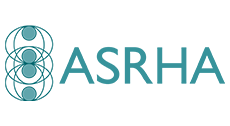HIV
Overview
- Untreated infection with human immunodeficiency virus (HIV) causes chronic immune deficiency which can progress to acquired immunodeficiency syndrome (AIDS) after a variable period (2-20 years) but on average 10 years after infection.
- People with HIV are treated by combination antiretroviral therapy (ART) which is life long and should start as soon as possible after diagnosis regardless of CD4+ T-cell count.
- People with HIV who consistently take ART daily as prescribed and who achieve and maintain an undetectable HIV viral load cannot sexually transmit the virus to an HIV-negative partner (U=U, undetectable = untransmissible) and have a near normal life expectancy.
- All patients need regular monitoring visits to assess their immune status, to check on response to therapy and to provide psychosocial support.
- Infection with the human immunodeficiency virus, a single-stranded RNA virus.
- HIV is transmitted when someone is in contact with body fluids (blood, semen, anogenital fluid) from a person with HIV who has a detectable viral load. These fluids must enter a HIV-negative person through a mucous membrane (rectum/vagina/tip of penis), open wounds or direct injection.
- HIV can also be transmitted vertically if the pregnant person has a detectable viral load during pregnancy or when breastfeeding.
|
Symptoms |
|
|
Complications |
|
Post-exposure prophylaxis (PEP) can be offered within 72 hours of potential HIV exposure. See the National HIV PEP Guidelines and Policy for more information.
For HIV diagnosis please follow the ASHM Decision making tool for HIV
Other useful resources - Could It Be HIV? - HIV Clinical Indicator Testing Tool 2021
People may present following a reactive HIV self-test. A confirmatory test following a reactive HIV self-test must be completed.
Prevention
- Post-exposure prophylaxis (PEP) can be offered within 72 hours of potential HIV exposure. See the National HIV PEP Guidelines and Policy for more information.
- Pre-exposure prophylaxis (PrEP) is an important new prevention option and can provide highly effective biomedical prevention of HIV in HIV-negative people. See the ASHM Decision making in PrEP tool for more information.
Treatment advice
Consider starting ART at the time of diagnosis or as soon as possible following diagnosis, regardless of CD4+ T-cell count.
See list of HIV s100 prescribers in your local area.
See the Antiretroviral Guidelines for more information about treatment options.
Other immediate management
- Discuss how people people living with HIV who consistently take ART daily as prescribed and who achieve and maintain an undetectable HIV viral load cannot sexually transmit the virus to an HIV-negative partner (U=U, undetectable = untransmissible) and have a near normal life expectancy.
- Discuss support available for all newly diagnosed patients. This includes peer navigation for people wanting to find support, information or services.
- May need urgent referral to experienced counsellor or psychologist.
- Avoid overemphasis of technical discussions about treatment options in the initial discussion.
- Discuss the need to inform sexual contacts of HIV status (provide support for contact tracing). If there is potential for transmission within the last 72 hours (e.g. condomless sex), offer post-exposure prophylaxis (PEP) to that contact.
- Consider completing comprehensive STI testing (syphilis, chlamydia, gonorrhoea), if not undertaken at first presentation, or retesting post the window period.
- Provide patient with a fact sheet.
- Notify the state or territory health department.
See the Antiretroviral Guidelines for more information about treatment options.
Special considerations
- Patient unwell - consider urgent referral to hospital or specialist centre for assessment.
- All complex situations should be managed in collaboration with a specialist.
|
Situation |
Recommended |
|
Co-infection with hepatitis B or hepatitis C |
May need to modify treatment choice. Seek specialist advice |
|
Should start ART. Seek specialist advice |
|
|
Allergy to treatment |
Check HLA-B57 status before use of abacavir |
|
HIV primary illness |
Urgent commencement of ART |
|
CD4 < 200 cells/μL |
High risk for opportunistic infection needs urgent treatment. May need chemoprophylaxis with co-trimoxazole/fluconazole – seek specialist advice. |
- Notifiable condition.
- Contact tracing is important to prevent re-infection and reduce transmission.
- The diagnosing doctor is responsible for initiating and documenting a discussion about contact tracing.
- Start with recent sexual or needle-sharing partners; outer limit is onset of risk behaviour or last known negative HIV test result if known.
- Post-exposure prophylaxis (PEP)can be offered within 72 hours of potential HIV exposure. See the National HIV PEP Guidelines and Policy for more information.
- Pre-exposure prophylaxis (PrEP) is an important new prevention option and can provide highly effective biomedical prevention of HIV in HIV-negative people. See the National PrEP Guidelines for more information.
See Australasian Contract Tracing Guideline - HIV for more information.
- Close follow-up is recommended after diagnosis, within a few days to check on psychosocial wellbeing, to review baseline investigation and to assess response to ART if started.
- Patient will need long-term regular reviews by a practitioner experienced in HIV care: at a specialist clinic, sexual health service or s100 GP prescriber.
- Patient should also see their GP for ongoing primary care.
- Once stable on ART follow-up can be every 3-6 months.
- 100% of patients should have contact tracing performed.
- 100% of patients should be offered treatment at the time of diagnosis.


